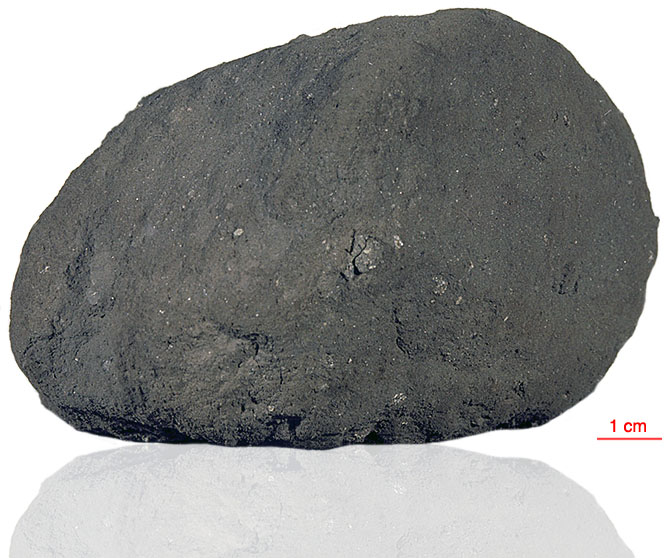79035 (146) Regolith Breccia
Collection:
Apollo 17

Click the microscope button to view a
thin section for this sample.
MicroscopeClick the microscope button to view a thin section for this sample.
MicroscopeFact sheet
79035 (146) Regolith Breccia
| 79035 is a dark, porous, fine-grained regolith (soil) breccia containing clasts of ilmenite-rich basalt, fine-grained vesicular breccias and spheres and fragments of glass. Basalt fragments (rotation 1) show moderate deformation, indicated by undulatory extinction in plagioclase and abundant twinning in ilmenite. Rotation 2 shows a feldspar-rich lithic clast and many mineral clasts. The fine-grained matrix consists of very porous glassy and crystalline fragmental material, including angular fragments of both homogeneous and highly vesicular glass and glassy spherules. The matrix glass which cements the crystalline and glassy fragments is commonly homogeneous. It has the highest percentage of agglutinate fragments of the various Apollo regolith breccias. The sample weighed 2806 grams before analysis and has not been dated. Further details of this and other Apollo samples are here: http://curator.jsc.nasa.gov/lunar/ |
About this collection
Apollo 17, the final manned landing mission, had two objectives: to obtain samples of ancient rocks from the lunar highlands and to look for evidence of younger volcanic activity on the valley floor.
This small Collection contains material deriving from both periods, including igneous rocks around 4.3 billion years old from the lunar highlands as well as younger volcanic samples dating from about 3.6 billion years ago.
Apollo 17 was launched on 7 December 1972.






